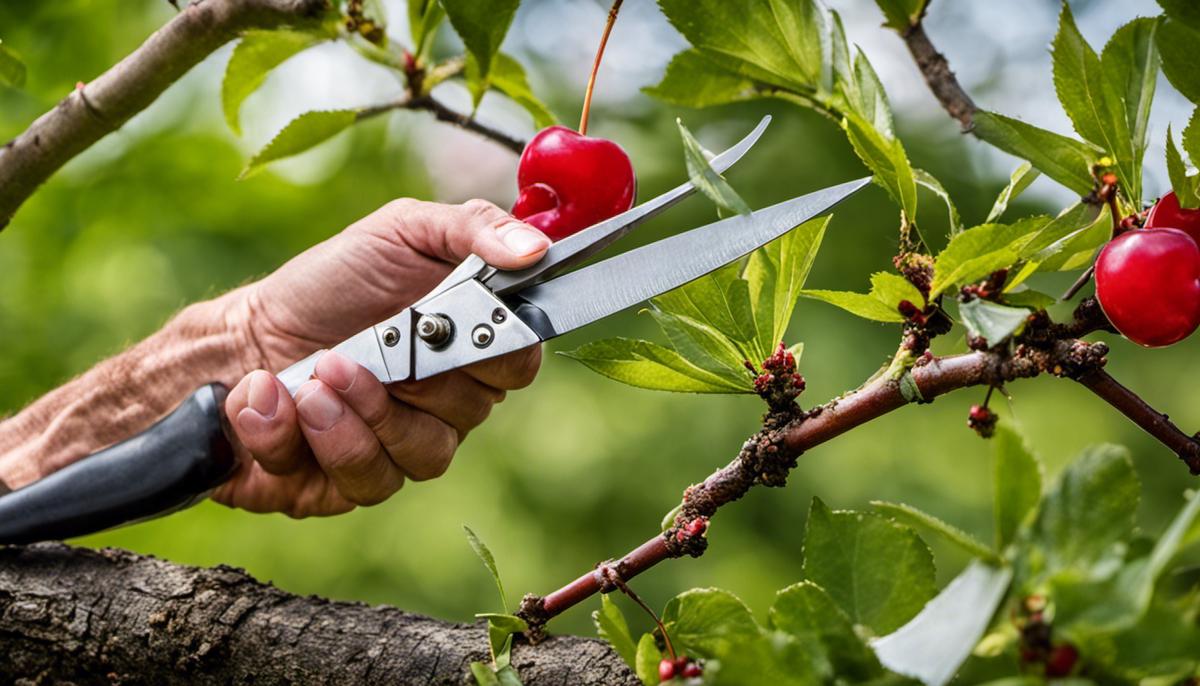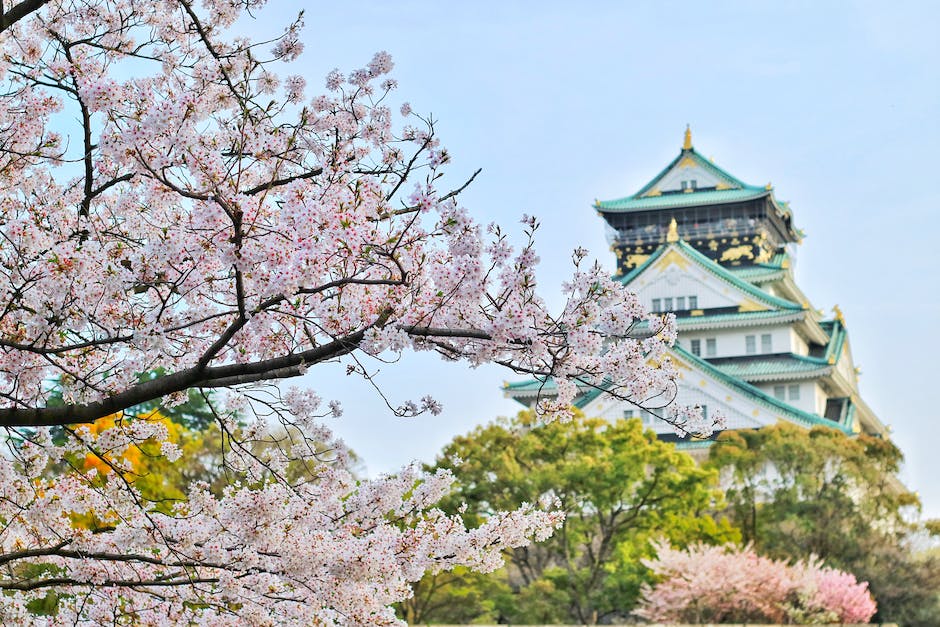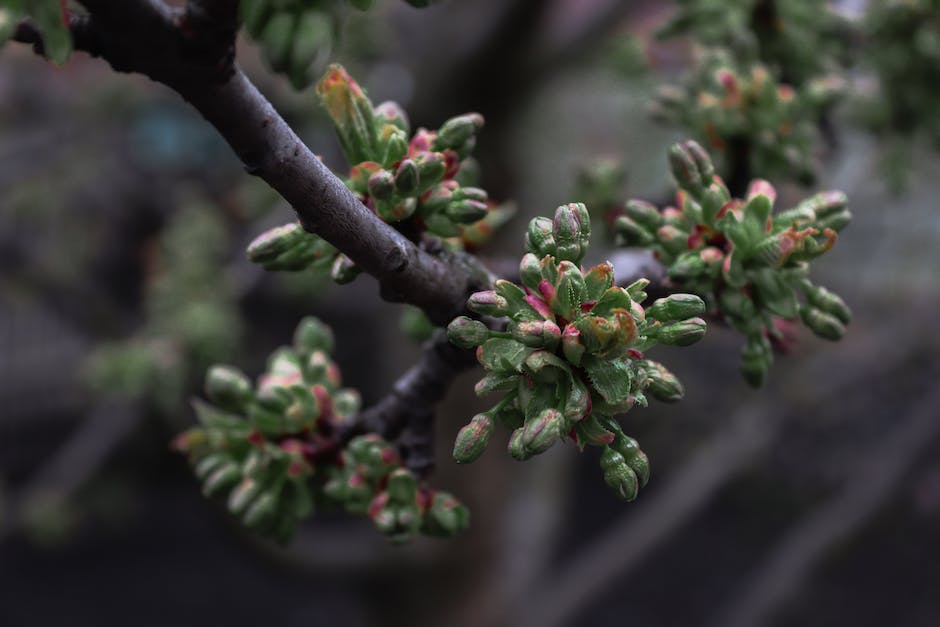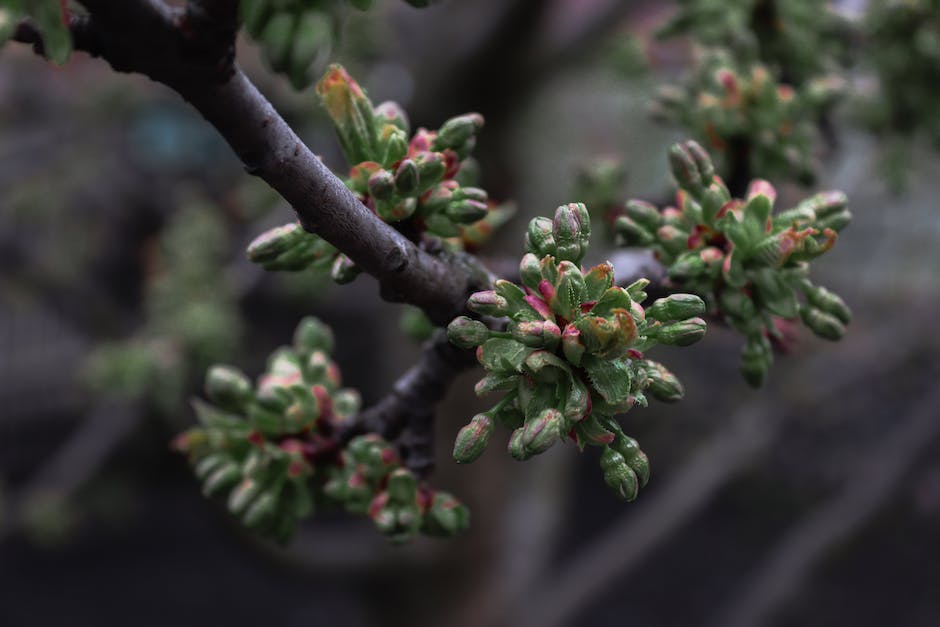Pruning your Weeping Cherry Tree: A How-To Guide

Pruning, an essential task for maintaining the health and aesthetic appeal of tree gardens, requires a deep understanding of the art itself, especially when dealing with specific species like the weeping cherry tree. This beautiful specimen, notable for its distinctive drooping branches, requires regular pruning to maintain its unique shape and promote healthy growth. Knowing the right time to prune, the necessary tools for the task, and the function of different cuts can ensure the tree not only survives but thrives. Additionally, learning to discern unhealthy branches is crucial in preventing disease spread and pest invasion. This write-up seeks to enlighten on these critical pruning aspects.
Understanding Pruning Basics
Pruning Cherry Trees: A Closer Grafting Of Knowledge
There’s no joy quite like the first bloom of cherry blossoms filtering down in the spring, the pink petals dancing to the whims of the wind. For many of you hobbyist gardeners and amateur arborists, learning to properly prune your cherry trees to enhance their health and beauty can become a significant part of your gardening routine. Let’s delve into the art of pruning cherry trees.
Firstly, equipment is key. A reliable pair of pruning shears for fine work, a loping shears for branches more significant than one inch in diameter, and a sturdy pruning saw will serve you well. Safety glasses and gloves are crucial for protection, and sanitizing your tools before and after use with a household bleach solution will help prevent disease transmission.
Understanding the tree’s life cycle is crucial. Cherry trees should be pruned while they’re dormant, generally in late winter or early spring. By this time, the threat of extreme cold has passed, but the tree has not yet begun its spring growth rush. This allows for rapid healing of the cuts and the redirection of energy into healthy growth.
Pruning isn’t just about hacking away errant branches. It’s about guiding the tree’s growth and shape, maintaining its health, and enhancing fruit production. Here are four basic principles to keep in mind:
- Follow the natural form: Cherry trees tend to have a vase-like shape with a rounded top. While pruning, aim to maintain this form for the health of the tree and aesthetic beauty.
- Remove the 3 D’s: Dead, damaged, or diseased branches should be promptly removed to prevent the spread of decay. Prune them right back to their base, where they connect with a healthy branch or stem.
- Thinning for light and air: Branches that cross or grow inward should be removed, as should branches that make the interior too dense. These prudent cuts allow more light and air to penetrate the canopy, promoting better growth and fruit yield.
- Heed the collar: When cutting, be wary of the ‘collar’, the swollen area at the base of a branch where it meets the trunk or larger branch. Cutting too close can harm the tree, so aim to cut just outside the collar without leaving a significant stub.
In the end, pruning arguably becomes a meditative endeavor as much as it is a practical method of caring for your cherry trees. It’s an opportunity, not only to engage with your beloved trees but also to learn, appreciate, and witness the wondrous cycle of nature. As your proficiency grows, remember that each cut you make is a conversation with the tree, a dialogue of growth, health, and vitality. Happy Pruning!

Identifying Unhealthy Branches
Pruning Precision: Identifying and Safely Removing Weeping Cherry Tree Branches
Embossed in a hobbyist’s heart is a profound adoration for their weeping cherry tree ─ a beautiful and dramatic tree known for its cascades of blossoms. Maintaining its health and aesthetics involves the timely and careful removal of unhealthy branches. This article dives into the details of how to identify and safely remove unhealthy branches, guiding hobbyists to promise their trees a long-lived grandeur.
Identifying unhealthy branches is a fundamental skill and honing this skill over time allows a hobbyist to make wiser pruning decisions. Unhealthy branches are typically quite easy to discern. Their symptoms might include a lack of leaves or blossoms, peeling bark, or fungal colonies. These are usually dead, damaged, or diseased branches that should be pruned immediately to prevent issues from spreading to other parts of the tree.
However, healthy branches can sometimes show some telltale signs of distress too. These symptoms include yellowing leaves or clusters of leaves that appear smaller compared to other branches. Always remember, early intervention can save a tree from extensive harm!
Once the unhealthy branches are identified, the next stage is the safe removal without hurting the tree. Employing the three-cut pruning method is a widely approved and practiced technique to prevent damage to the remaining parts of the tree while removing the unhealthy branches.
In the three-cut method, the first cut is made a few inches away from the trunk, cutting halfway through the branch from the underneath, serving as a safety cut. The second cut is made a little further out along the branch, cutting from the top down. The branch should break away cleanly because of the first undercut.
The final cut is made in line with the branch collar, closer to the trunk. Our aim is to leave a smooth surface with no stubs, following the natural lines of the tree. Remember, safety precautions should not be neglected. A good pair of gloves and sturdy safety glasses are recommended during the procedure.
After the unhealthy branches are removed, ensure proper disposal to avoid any possibility of disease transmission. In the case of cherry trees, burning the pruned branches is an appropriate method of disposal since it helps to break the life cycle of any pests or diseases.
Pruning is not just maintenance; it’s a labor of love which, when executed properly, helps retain the charm and health of our beloved weeping cherry tree. It’s important to prune with a purpose and an understanding of the tree’s growth and healing processes. With smart and safe methods, and our devotion, we can ensure a dazzling spring display from our weeping cherry year after year!

Maintaining Tree Shape and Balance
It’s a delight to dive into the more cerebrated and delicate nuances of pruning weeping cherry trees. This captivating activity that’s part art form, part horticultural science requires not only the keen eye of an observer but the gracious hand of an artisan. This guide on all the nitty-gritty details of how to prune a weeping cherry tree is sure to keep enthusiasts engrossed and inspire newcomers.
First, let’s delve into the aesthetic appeal and overall health of weeping cherry trees. Preserving the cascading, fountain-like shape of the tree, which gives it its mesmerizing appeal, is no less than artistry. It involves the removal of branches growing upwards or out horizontally. Using a hand pruner carefully, one can trim these nonconforming branches back to the point where they originated from beneath another branch or from the main trunk. As a result, the weeping habit of the tree is maintained, while still permitting ample sunshine and airflow, vital for its health.
From the perspective of health, identifying destructive elements such as unhealthy or dead branches is indispensable. Lookout for branches with telltale signs such as a dearth of blossoms or leaves, discolored foliage, unusual lumps, or peeling bark. Not just the dead or dying branches, but those showing early signs of distress also need immediate attention, as they could potentially harm the tree’s health.
Still, we must be mindful that even the simplest of cuts can injure the tree and provide an entryway for disease. Here enters the ingenious three-cut pruning method. Firstly, make a small notch on the underside of the branch about 4-5 inches from the branch collar. Secondly, cut the branch 1-2 inches further out, removing most of its weight. The initial notch ensures the bark doesn’t tear down the trunk as it falls. Finally, carefully cut just outside the branch collar, not leaving a stub nor cutting into the swelling.
Post-pruning care shouldn’t be neglected. All the pruned branches, especially the diseased or insect-infested ones, should be promptly disposed of. Don’t compost them as it might create a breeding ground for pests and diseases lead to contamination. The healing process for the tree requires time, patience, and nurture, mirroring the diligent efforts put in by the enthusiast.
To end on a note of reflection, every single snip and trim resonates with the magnanimity and labor of love it entails. Pruning is so much more than mere maintenance; it is a testament of time, passion, and attentiveness dedicated towards the nurturing of this graceful, living sculpture – the weeping cherry tree. This magical journey of growth and healing is indeed gratifying, isn’t it? Pruning a weeping cherry tree unquestionably leaves you with more than just a well-manicured tree; it imparts wisdom and peace. It’s the embodiment of the age-old saying, “The best time to plant a tree was 20 years ago. The second best time is now.” May each careful cut breathe new vigor into your cherished tree. Happy Pruning!

The elegance of weeping cherry trees can be easily maintained with regular and informed pruning. Succinct knowledge about identifying unhealthy branches and removing them with minimal stress to the tree is as crucial as understanding how to maintain the beloved shape and balance of the tree through careful pruning. It’s this delicate balance between health preservation and aesthetic preservation that makes pruning more of an art than a chore. With the knowledge and tips shared, any gardener can uphold the allure of weeping cherry trees, aptly preserving their pristine beauty and longevity.



